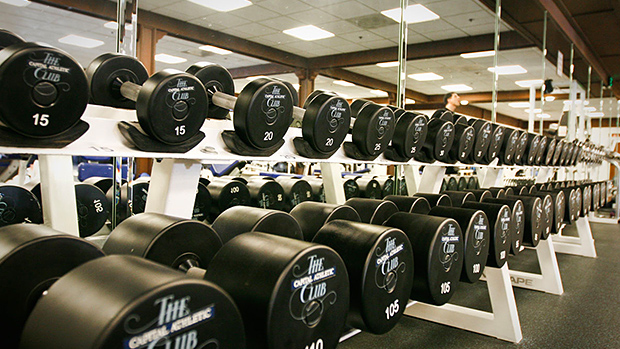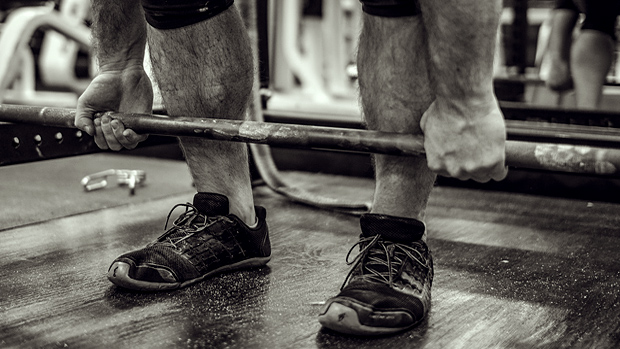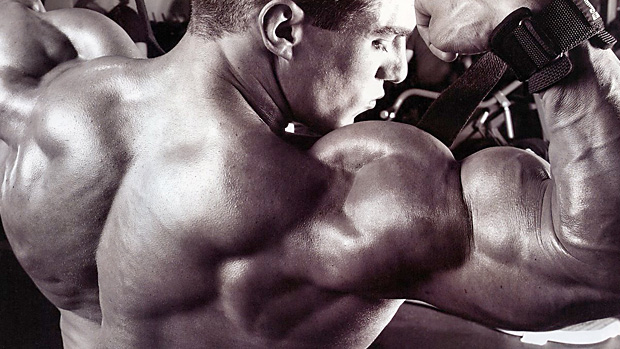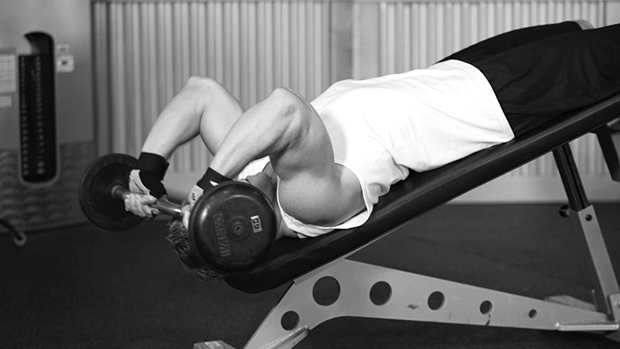Last year was probably my best year of training since I first discovered the barbell nearly 30 years ago. I never would've thought I'd be saying something like that, especially at age 53.
I mean, what was so special about last year?
I finally narrowed it down to 6 primary factors that contributed to my best-ever year of training. Implementing just one of these ideas will markedly improve your training – embrace all 6, and you'll look back (as I'm doing right now) and think, "Why didn't I do this sooner?"

Strength is the adaptation that leads to all other adaptations that you really care about – hypertrophy, joint-integrity, sex appeal, power, insulin-sensitivity, optimized hormone levels, self-respect, injury-resistance, command presence, and all-around badassitude.
Problem is, working hard at getting stronger is, well, hard!
Before long, almost anything else starts to look sexier than sweating and grunting – dynamic stabilization, foam rolling, corrective exercise – hell, even stretching can sometimes seems more appealing than putting that heavy bar on your back again.
Now look, all the things I just bashed have their place, but only if they help you get stronger. The trick is to have the ability to honestly determine if you're doing it for the right reasons, or only because almost anything else seems more attractive to the gut-busting work you're already doing.
Toward the end of 2011, I started to "live and die" by this philosophy, and it paid off in spades – I'm much stronger than I've ever been, and I actually had zero orthopedic issues for the entire year of 2012.

I have two of the best training partners you could imagine. First is Gene Lawrence, who I've known and coached for over 5 years now. Gene is a multi-world champion in raw powerlifting and holds numerous world records as well.
Gene is a major inspiration. Just to cite the most recent example, how many 73-year-olds do you know who manage to return to deadlifting from the floor less than 10 weeks after having an avulsed quadriceps surgically reattached?
Second, I finally met T Nation contributor Bret Contreras last summer after realizing that we both live in Phoenix, Arizona, and we started training together almost immediately thereafter. Bret truly has the perfect resume for a training partner: smart, highly educated, strong, passionate, and generous.
What makes Bret especially valuable for me is that we have similar body types (tall with "unfortunate" levers) and strength levels (he's stronger than me on most lifts, but I can beat him in a few others). This allows for a competitive environment against a guy who inspires me, but who's not so far ahead of me that I can't imagine catching up to him eventually.
Bret also inspires me to rethink my pet theories and long-term habits, and I think I do the same for him. Bret likes to train by the seat of his pants, while I tend to be more structured by nature. Over time however, we've both come to realize the benefits and drawbacks of each approach, to the betterment of us both.
Hindsight is 20/20 as the old saying goes – I can't urge you strongly enough, if you don't currently have a training partner, or have one who underwhelms you, start looking around. You can't imagine the difference it'll make until it happens.

Another thing I did was examine my overall preparation strategies for weaknesses. I had a great training environment complete with great training partners, I was motivated, healthy, and I knew how to train. The only thing that really stood out was that my nutrition was, well, embarrassing.
Sure, I'd go for stretches where I was inspired to eat better, but those periods were exceptions to the norm. In the back of my mind, I always recalled something I'd heard TC say: "Whenever I get my protein intake up to 1 gram per pound of bodyweight, something magical starts to happen."
I instinctively believed that, but always lacked the self-discipline to do it, for sustained periods of time anyway.
I decided I was going to get some adult supervision in this area, and stumbled upon Eric Helms, who, apart from being an accomplished raw powerlifter and pro bodybuilder, also has strong academic credentials and a great track record of getting his clients super lean without sacrificing strength in the process.
As my nutrition coach, Eric has me report my macronutrient numbers to him every day, and although my carb and fat intake are periodically modified according to the progress I'm making, so far at least, I've been eating 250 grams of protein a day, every day.
This is a radical change for me. If I had to guess, my average protein intake has been about half of that number for as far back as I can remember.
As of this writing, my "high" protein intake has been in place for about 12 weeks, and I'm convinced that it's already paying off big time. It seems I simply can't train hard enough to get sore, and despite dropping 8 pounds so far (all of which appears to be body fat), my bench and deadlift have actually improved, and I expect to better my best total as a 220 lifter in the 198-class in April.
Although I've always used protein powders, they're now an indispensible part of my diet – in fact I have three recipes involving Metabolic Drive® Low Carb that I just couldn't live without at this point.

That might sound like an odd thing to say, given the enormous popularity of the sport worldwide. Powerlifting has no shortage of critics however, from corrective exercise types who warn that powerlifting is a certain path to injury, to Olympic lifters who mock the sport as an "easy" and non-technical.
Although I used to side with these sentiments, I now disagree. In late 2011, after a long, frustrating plateau in my Olympic lifting progress, I decided to train for and enter my first power meet for a change of pace.
Lo and behold, lots of things started to change for me. For starters, and not surprisingly, my squat, bench, and deadlift all improved significantly. I had always performed these lifts mind you, but only as an "afterthought" – at the end of heavy, time-consuming snatch or clean & jerk sessions.
More surprisingly, a chronic case of shoulder impingement all but disappeared, despite the fact I was now benching twice a week (benching had always caused problems for me, in any of its permutations).
Also, I was starting to notice some real changes in body composition, although I hadn't (yet) made any changes to my diet.
Incidentally, after that first power meet, I decided to do an O-lift workout just as a change of pace, and to see how much I'd lost on these lifts. Much to my surprise, I worked up to a 180-pound power snatch, and 3 days later, I power-cleaned and jerked 225, and then power cleaned 231, but missed the jerk.
Basically I hadn't lost any ability in these lifts, despite not having done them at all in nearly 7 months. The positive transfer from heavy squatting and deadlifting was enough to maintain my ability in the O lifts.
As for powerlifting not being technical? Look, everything is technical when you pursue it at a high enough level. You really think guys like Benedikt Magnusson and Andy Bolton couldn't teach you a few things about deadlifting? C'mon. And besides, is your goal to do technical lifts or to get results?

I certainly knew about Jim and had heard rumblings about 5/3/1, but didn't buy his 5/3/1 Manual until the spring of 2012. If you want to understand the extent of how impressed I am with this program, let me just say that I'm incredibly envious that I didn't come up with it myself, and that doesn't happen a lot with me.
The beauty of 5/3/1 is that it's a solid training template that ensures progressive overload while allowing for a significant degree of flexibility at the same time.
For example, the "standard" 5/3/1 template has you performing the squat, bench, and deadlift on separate training days, which is how I followed it initially.
Later on, I discovered that Andy Bolton preferred to bench on Mondays (because it was his weakest lift, and he wanted to train it early in the weak, while he was freshest) and squat and pull together on Wednesdays, since you always squat and pull on the same day in power meets. This made a ton of sense to me, and it only took me a moment to realize that I could seamlessly implement this change within the 5/3/1 framework.
In the 5/3/1 manual, Jim also presents several recommended layouts for assistance exercises so again, there's a lot of potential improvisation available. I've heard that Jim has just released a second edition of the manual, which is next on my list.
I should mention that 5/3/1 is not exclusively a powerlifting program – it's really designed to promote overall strength, hypertrophy, and athleticism. Powerlifters, Olympic lifters, strongman competitors, and even bodybuilders can successfully use it. I can't recommend 5/3/1 highly enough – Jim Wendler is a genius.
This is my final epiphany, and in many ways, the most important. When you've been in the game as long as I have, you can get to the point where you assume you've "been there, done that," and start to stagnate because you really don't think you'll ever learn anything new, or at least of any significance. I'm so glad to see that I was wrong about that.
The secret to your renewed progress, if it can be called a secret, is that the things you need to learn probably won't be found in an arcane Russian training manual, the latest anabolic steroid, or a super-expensive DVD program.
The "secret" is most likely right in front of your nose. If I had read this article 20 years ago, I would find myself nodding in agreement on all 6 of these points. All of them are so, might I say, obvious. They're so obvious that it took me over 30 years to discover them!
I'd love to hear about your most significant realizations in the LiveSpill comments below. What paradigms, habits, and/or practices have you either installed or removed from your training or nutrition over the past year?




